We've collected 6,000 bricks - now we need to find them a new home
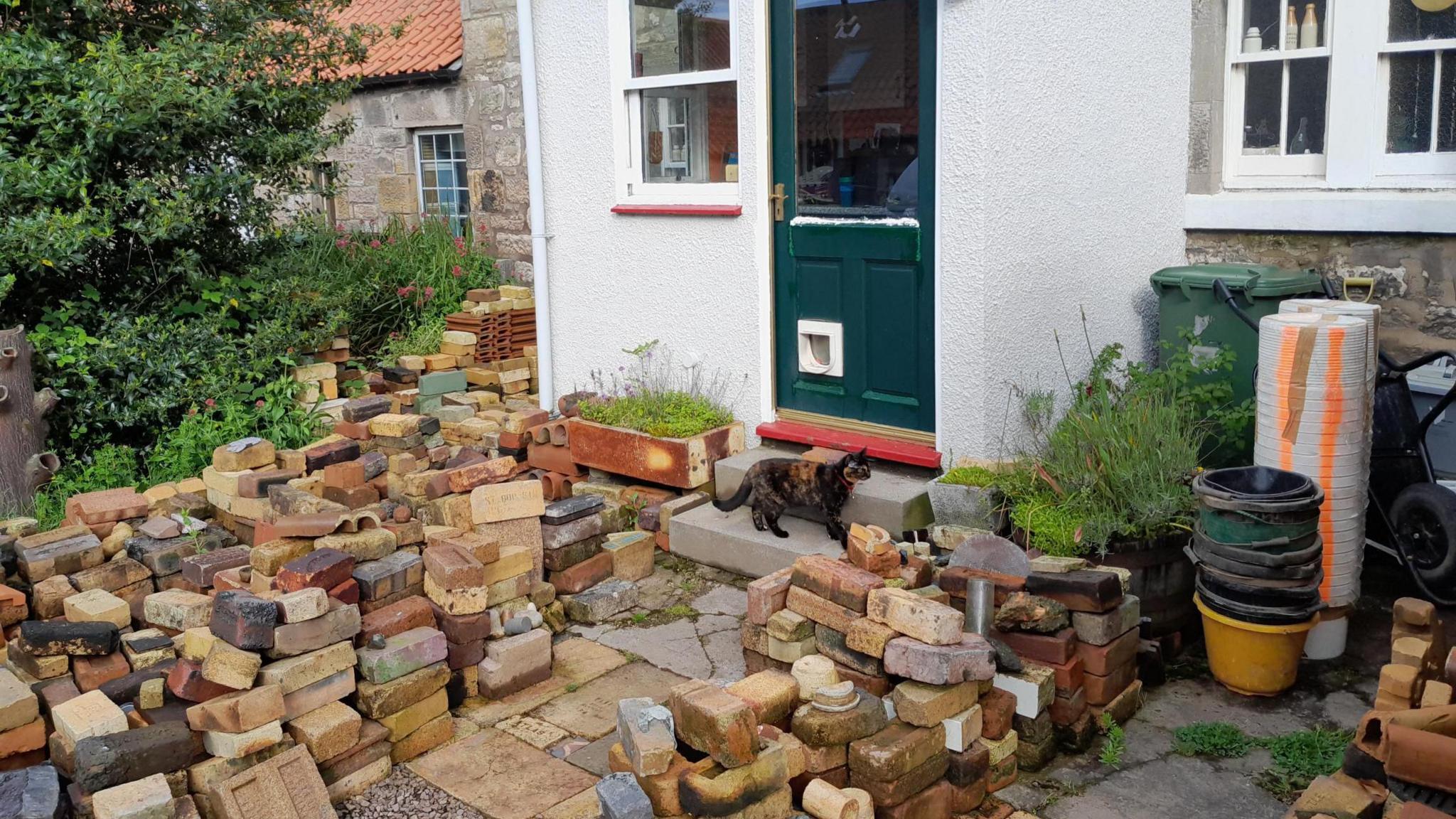
Only a small path leading to Ian Suddaby's door in his East Lothian garden is not covered in bricks
- Published
Two Scots who are believed to own the biggest brick collection in the UK are looking for a museum to house all 6,000 of them.
Mark Cranston and Ian Suddaby have spent the last 15 years collecting thousands of Scottish-made bricks from all over the world.
Part of the collection is stored in two large stables in Mr Cranston's garden in the Scottish Borders; the rest is stacked outside Mr Suddaby's house in East Lothian.
The pair have an agreement that if something happens to one of them the other will make sure their priceless collection is safe. However, they have now decided they need to find a more secure and permanent home for them.
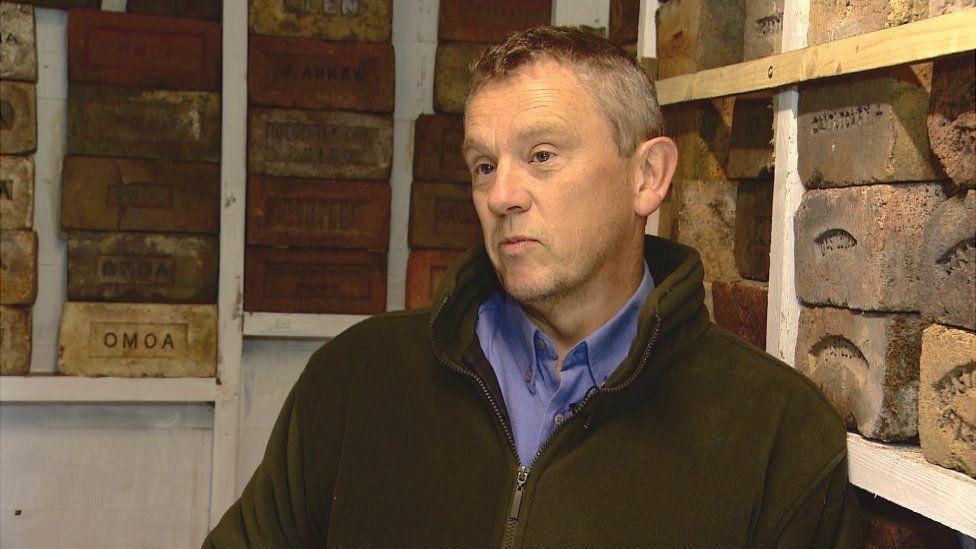
Mark Cranston's hobby began in 2010 when he was looking for a brick as a doorstop for his garden shed.
Mr Suddaby, an archaeologist who lives in New Winton, told BBC Scotland News the bricks were an important record of Scotland's industrial past.
"Brick-making is a very important part of Scotland's history because we do have some of the best quality fireclay in the world for making industrial bricks.
"And this ties in with the industrial revolution and I think it should be promoted to a wider audience and that should be in some sort of a museum.
"My collection has completely outgrown my garden and the area around my house."
The 61-year-old started collecting bricks when he noticed other archaeologists discarding them at digs.
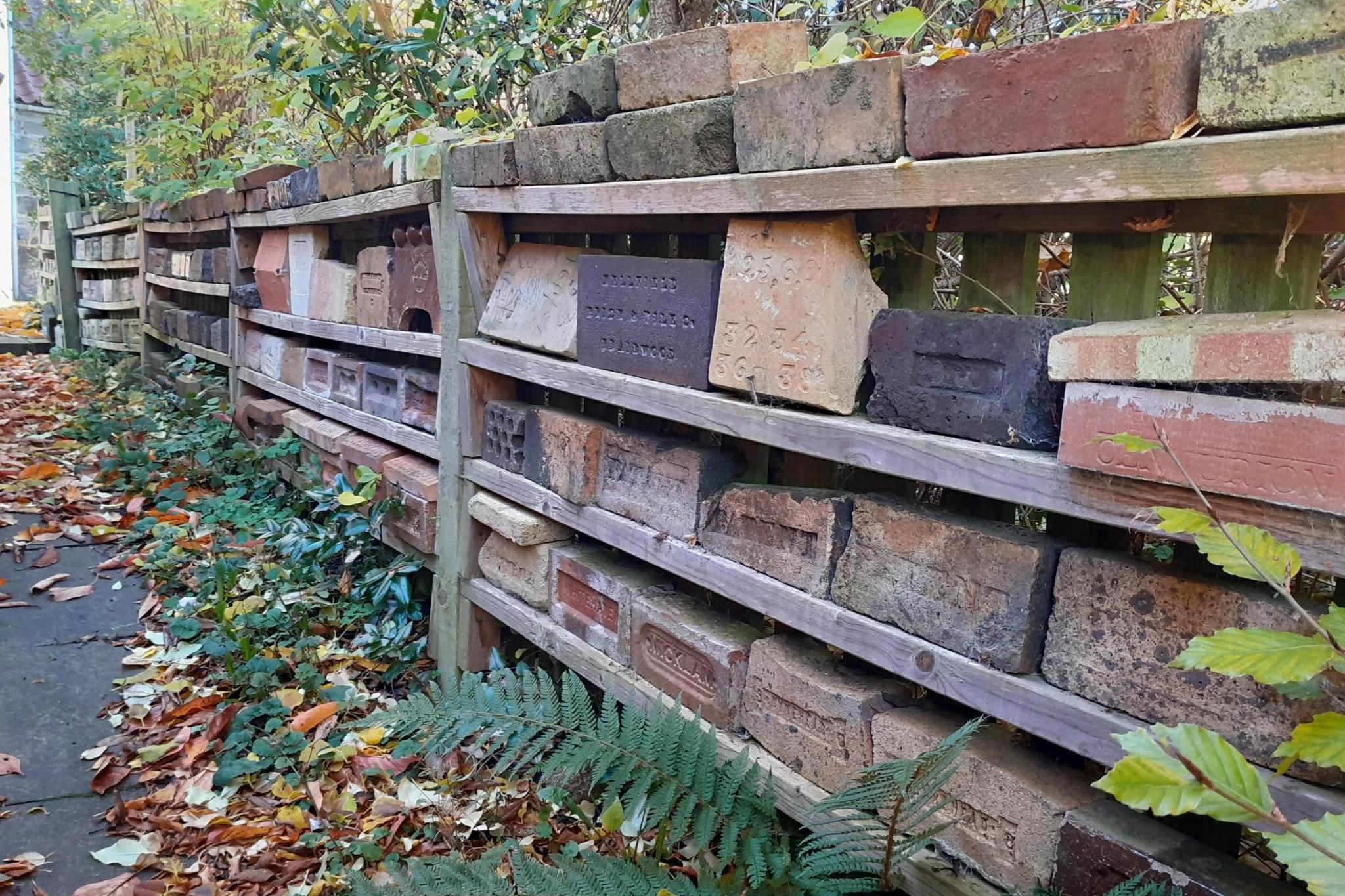
Ian Suddaby has bricks on shelves all around his house
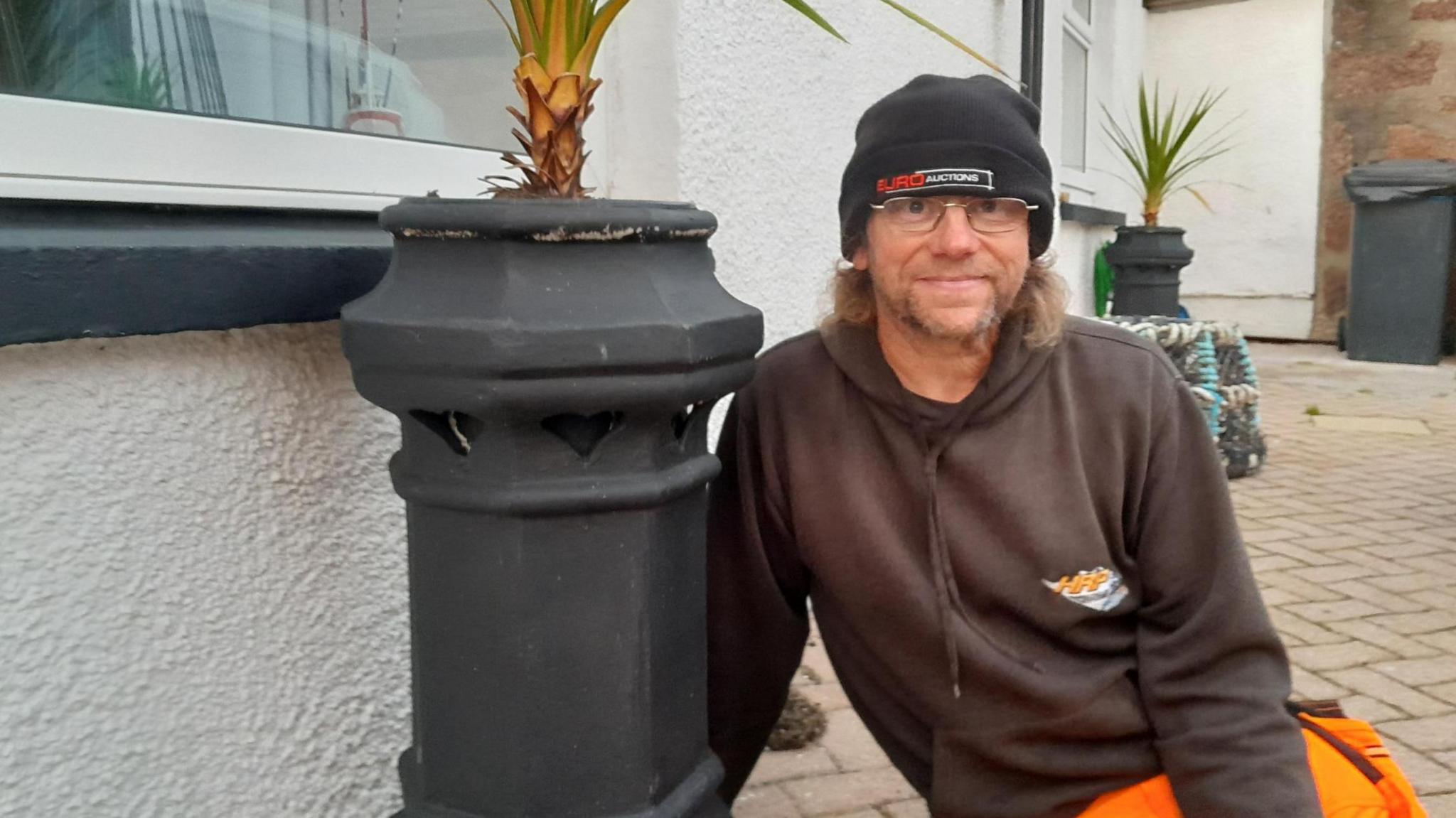
Ian Suddaby says bricks are under-valued by fellow archaeologists
"Bricks are under appreciated by archaeologists," he said.
"Bricks hold historical value. Mark and I both have lots of bricks that are the only known product of sometimes quite major brickworks that employed a lot of people over many years.
"A lot of people regard bricks as thoroughly mundane and not very interesting and yet the people that start collecting them soon realise it's an extremely interesting hobby."
Among their collection is a special fire brick that was salvaged from the SS Politician, after it ran aground in the Outer Hebrides in 1941 carrying 264,000 bottles of malt whisky - inspiring the novel and film Whisky Galore!
There is also a brick that was retrieved from the execution block at Barlinnie prison in Glasgow, before it was demolished in the late 1990s.
The men own a Scottish-made brick recovered from an old gold mine in Washington state, USA. Their oldest brick is a drainage tile from 1833.
Their collection even out-numbers that of The Brickworks Museum - the UK's only brick museum - in Swanwick, Hampshire, which has about 3,500 bricks.
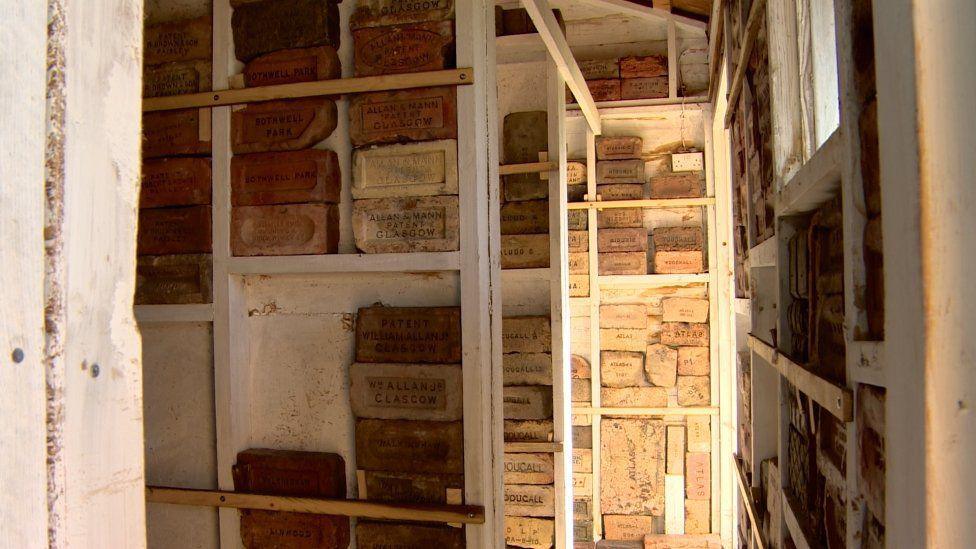
Mark Cranston has shelves of bricks in stables in his garden in Jedburgh
Mr Cranston says he has catalogued every Scottish brick, external they have found or been given.
"As far as Scottish industrial history goes this collection is unique," he said.
"We were at the forefront of the industrial revolution. It was all about industrial processes of heat and steam.
"Wherever there was heat you had to protect whatever was being heated by the direct heat source so you would have fire bricks in between."
The retired police sergeant said there were still thousands more examples of Scottish bricks to find.
"We are adding bricks every week that we haven't recorded before," he said.
The 62-year-old said when he first started in 2010 he asked the National Museum of Scotland how many different stamped Scottish bricks there were and was told 350.
"Obviously we have now proven that's way out," he said.
He added that he was very proud of their collection.
"It's a unique way of collecting industrial history, which interests both of us," he said.
"I can't even begin to think how many hours have gone into the website to record the bricks let alone searching for them and the travelling we've done.
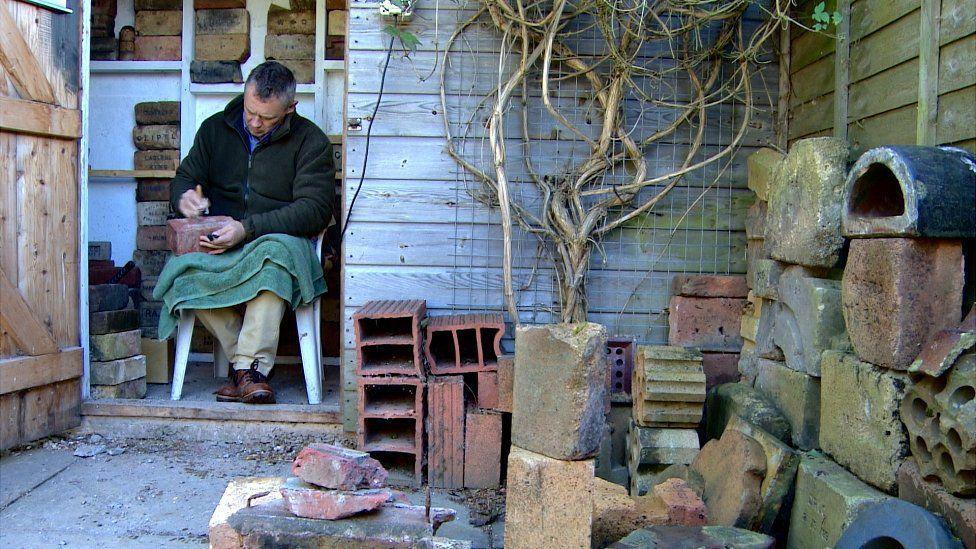
Mark Cranston charts every brick in the collection
"Ian is very lucky because he's able to go on the archaeological sites so he's able to save them.
"They have a story to tell, they are worth delving into and researching.
"It was a hobby and now it's a passion addiction."
He doesn't want to give them up but he knows he has to and that the search for a museum might take a long time.
"We want to make sure they are saved for Scottish people and that the collection is there for all time.
"There was no point searching for them all for them to disappear when we're gone."
Related topics
- Published27 January 2024

- Published18 October 2016
